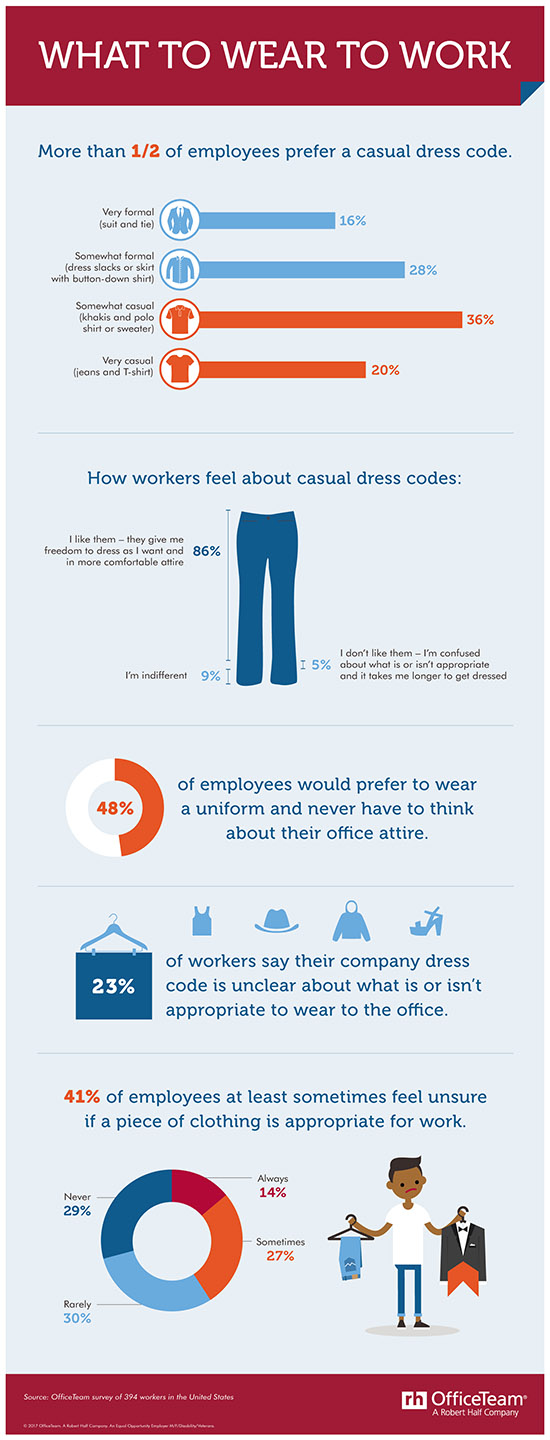Is What You Wear To Work Up To [Dress] Code?
Additional findings from the survey include:
- Those ages 18 to 34 (56 per cent) have the greatest preference for formal dress codes. They’re also most commonly unsure if their clothing is appropriate (54 percent) and the age group with the largest number of respondents interested in wearing a uniform (59 per cent).
- More men (54 per cent) prefer formal attire than women (30 per cent).
- Nearly half of men (48 per cent) are at least sometimes confused about whether their apparel is OK for work, compared to 31 per cent of women.
- Most employees (86 per cent) reported they like casual dress codes because they can wear more comfortable clothes.
- About one in four respondents (23 per cent) said their company policy isn’t always clear about what attire is acceptable.
Employees were also asked to reveal something they’ve considered wearing to work but were unsure whether it was appropriate. Here are some of their responses:
|
• An off-the-shoulder top • Leggings • A Hawaiian shirt • Flip-flops • A baseball hat • Jeans • Pajamas • Fishnet stockings |
• A tight sweater • Capri pants • A track suit • A low-cut top • Dressy sandals • A hockey jersey • Shorts |
• Cargo pants • A political T-shirt • Colored jeans • A tank top • Tennis shoes • A short skirt • A sheer top |
“As work attire skews more casual, the rules about acceptable office wear aren’t always clear-cut,” said Brandi Britton, a district president for OfficeTeam. “Besides following official company policies, employees should pay attention to the wardrobes of managers and colleagues. If you’re uncertain about whether it’s OK to wear something to work, it’s best to play it safe by skipping it.”










